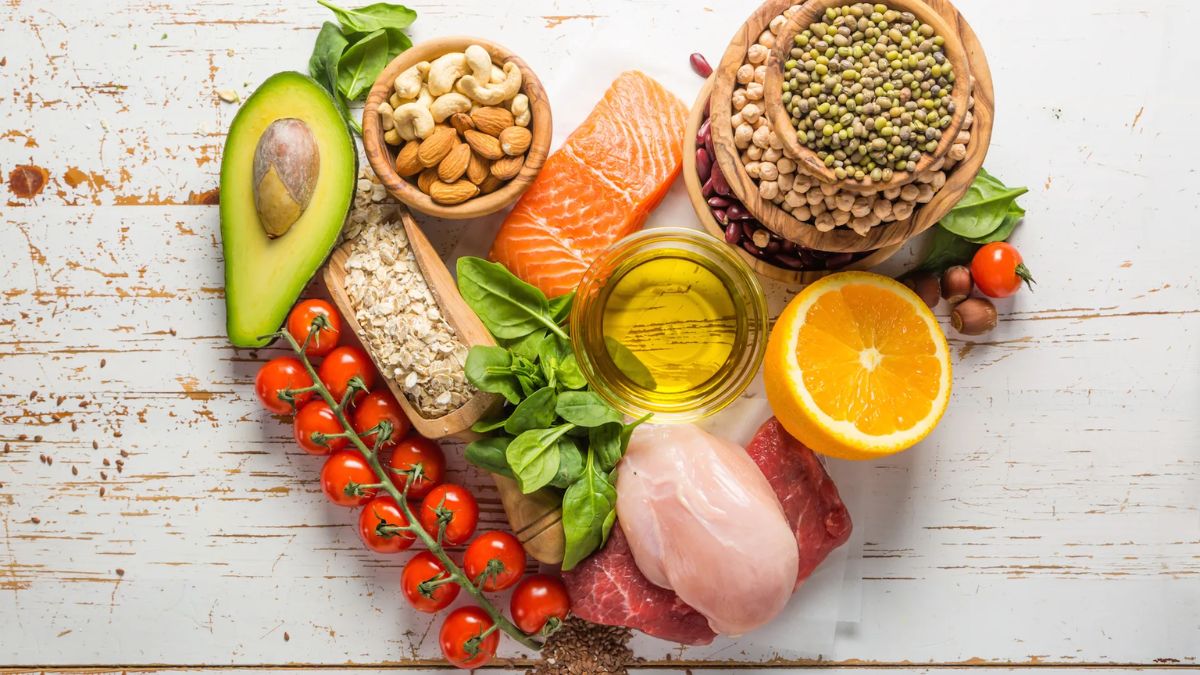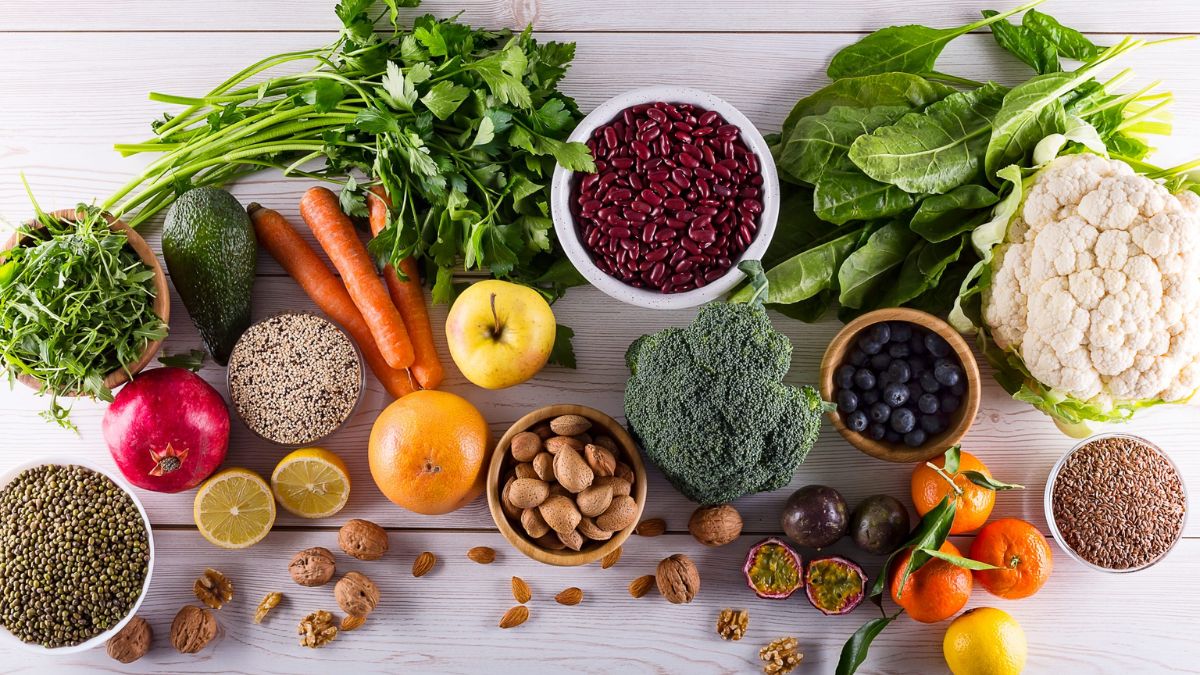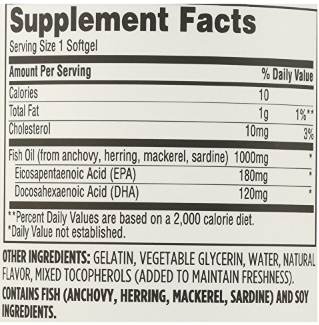If you’ve ever wondered whether you should take Omega 3 supplements, you may have noticed that the label does not tell you much. There is not enough research on the benefits of omega-3 fatty acids to determine the %DV. %DV is the recommended daily value, based on a 2,000-calorie diet. But the good news is that these supplements can provide numerous health benefits. Here are some facts you should know about these supplements:
One gram of EPA and DHA daily can help reduce your triglyceride levels. Fish oil supplements contain higher amounts of EPA and DHA than other types of fish, and the American Heart Association recommends two servings of fish each week. A high-quality fish oil supplement will provide at least two hundred and seventy milligrams of EPA and DHA each, and that’s about double the recommended daily allowance.
Omega 3 Supplement Facts
The National Health and Nutrition Examination Survey (NHANES) measures the amount of omega-3s in American adults. They are the main building blocks of cell membranes, including brain cells. In the U.S., the average daily intake of omega-3s from foods is 1.32 g for females and 1.55 g for males. In Canada, however, consumption of omega-3 supplements is much lower, with only two grams per day recommended.
What is Omega-3, and Why is it Important?
Omega-3 is the name of a group of fatty acids that are beneficial to our health in several aspects:
1. Helping with Essential Functions in Cardiovascular Activity:
lowering blood lipid levels, blood clotting levels (which can help prevent strokes and heart attacks), blood pressure, and the risk of atherosclerosis, among other things.
2. Immune System Regulation:
prevention of infections and autoimmune diseases.
3. Brain Development & Function:
Omega-3 is essential for normal and healthy brain development in the womb and early childhood, so pregnant and breastfeeding women should ensure they get enough of it. There is also growing evidence that omega-3s are suitable for brain function, preventing Alzheimer’s disease and other brain diseases, and even treating depression and ADHD. There is some disagreement in the scientific literature about how helpful omega-3 is in this area because it is hard to separate its effect from the many other things that affect how the brain works.
What are the Types of Omega-3?
There are three types of omega-3: alpha-linolenic (ALA), which is found in many plant-based foods, DHA and EPA, which are found in deep and cold water algae and the fish that eat them.
DHA and EPA are already active in the body, but these active types can also be made from ALA. This ability to change isn’t powerful. It depends on many things, especially the ratio of omega-three fatty acids to omega-six fatty acids (which will be elaborated on later). Omega-3 production can also be hampered by overeating trans fat, caffeine, and alcohol and not getting enough vitamin C, zinc, magnesium, and B-group vitamins.
Gender and age are two things that don’t have to do with food that affects conversion. Women’s bodies are better than men’s (probably because they need to ensure their children have enough omega-3), and they can usually keep doing this conversion for longer.
This conversion is also slowed down by smoking, diabetes, and dyslipidemia (high levels of lipids in the blood).
ALA
- Alpha-linolenic acid (ALA) is the omega-3 fatty acid you eat most of the time.
- It is mainly used for energy but can also be turned into EPA and DHA, biologically active forms of omega-3.
- But this method of conversion isn’t very good. Only a small amount of ALA is turned into active forms.
- Flax seeds, flaxseed oil, canola oil, chia seeds, walnuts, hemp seeds, and soybeans are all excellent sources of ALA.
EPA
- Eicosapentaenoic acid (EPA) is primarily found in animal products, like fatty fish and fish oil. But EPA is also found in some microalgae.
- It does a lot of things in your body. It can be changed into DHA in part.
DHA
- The most important omega-3 fatty acid in your body is docosahexaenoic acid (DHA).
- It is a crucial building block of your brain, the retina of your eyes, and many other parts of your body.
- It is mainly found in animal products like fatty fish and fish oil, just like EPA. Meat, eggs, and dairy from animals that eat grass also tend to have a lot of it.
- Vegans and vegetarians often don’t get enough DHA. They should take microalgae supplements to ensure they get enough of this omega-3.
Omega-3 vs. Omega-6
Omega 6 is also a necessary fatty acid for your body, but the modern Western diet has too much omega-6 and not enough omega-3. Omega 6 is found in most vegetable and animal fats, seeds, nuts, and oils and spreads from them. The primary sources are soybean oil and canola oil. Vegans get a lot of Omega 6 because they eat a lot of sesame (tahini) and other seeds and nuts. The more Omega 6 fat there is, the less Omega 3 can be changed into a form that the body’s active types can use.
Fish – is not a Recommended Source of Omega 3
People often think that eating fish is an excellent way to get enough Omega 3, but fish only have Omega 3 if they have eaten food that is rich in Omega 3. Most fish live in deep, cold water and eat tiny algae high in Omega 3. Other fish either don’t have any Omega 3 or have much less than salmon.
A quarter of the fish sold in Israel comes from fish farms. These fish are fed an Omega-3 supplement, but their waste and antibiotics have been found in the fish. These fish probably have less mercury and arsenic than, say, sea fish, but they are still exposed to other toxins like PCBs and chemicals that act like dioxins. People think there aren’t enough fish farms and farmed fish rules. Also, not all fish in the sea have omega 3. For example, Mediterranean fish are likely to have almost no omega 3. Omega-3 levels are not listed on the fish packaging, and there are no rules.
Even fish with Omega 3 have this component, but not as much as flaxseeds and chia seeds. Since there are cheaper and easier ways to get Omega 3, there is no reason to get it from fish. In the past few years, chickens fed omega-3-rich seeds, like flaxseeds, have laid eggs high in omega-3s. Here, too, the Source comes from plants, and it’s best to get it directly instead of through the cholesterol in eggs.
Omega 3 and Veganism
The question comes up of whether or not the lack of Omega 3 types DHA and EPA in vegetarian and vegan diets is bad for their health. The researchers concluded that Omega 3 from fish is unnecessary for vegetarians and vegans to keep their hearts healthy. This isn’t surprising since much research has shown that vegetarians and vegans are less likely to get heart disease than other people. This is because plant foods have a lot of fiber, antioxidants, and phytochemicals, all of which are good for you. Their diet also has low cholesterol and saturated fat (especially vegans).
Even though there is evidence that omega-3 may be good for the immune system and brain, it is still recommended to include it in the diet, if only to increase the health benefits of a plant-based diet.
Plant Sources for Omega 3
Even though oils like canola oil and soybean oil have some omega 3, they have a lot more omega six than omega 3, so they can’t be considered a significant source of omega 3.
Olive oil is the best oil to use. Even though it doesn’t have omega-three or omega-6, it does have other health benefits. Omega 3 is also in some green leaves but in tiny amounts.
Walnuts have a lot of omega three but not as much omega six as other foods. But flaxseeds and chia seeds are the best sources regarding how much omega 3 to omega six they have.
The daily need for Omega 3 is between 2 and 3 grams, and women who are pregnant or breastfeeding need 3 grams.
Adding 1-2 tablespoons of chia seeds or ground flaxseeds to your food is the easiest and cheapest way to get Omega 3, and they don’t have a strong flavor and are hard to notice. This much will give you between 1.5 and 3 grams of omega-3 ALA. If you add roasted walnuts to it, the amount of Omega 3 will be just right.
Flaxseeds and Chia – How to Eat them?
Omega 3 is easily broken down by heat, light, and air because it is susceptible to these things. To get the most Omega 3, add flaxseeds and chia to cold foods like cereal with plant milk, fruit smoothies, salads, or sprinkle a little on a sandwich. You can also put them in stews and porridge, but it’s best to do that before serving.
Chia seeds are more expensive and more complicated to find than flaxseeds. You can buy flaxseeds at any natural foods store or in the spice section of a supermarket. They are hard to digest because of their shells, so it is best to eat them as ground seeds. The best way is to grind them yourself with a coffee grinder, blender, or spice grinder and store in the freezer as much as you need for two to three weeks. You can also buy ground flax, but make sure to get the kind that comes in a vacuum pack and is kept in the fridge.
Also, it’s essential to know that chia seeds, the seeds of one type of sage, don’t need to be ground up and will soak up any liquid they’re in, making them easier to use. Flaxseeds and chia seeds are great iron, calcium, and zinc sources and contain omega-3. Vegan patties and baked goods can be made with a mixture made from ground flaxseeds (which results from the jelly texture of the omega-three itself). Since these recipes involve baking or frying, they probably aren’t much omega 3.
What is the Omega-6 to Omega-3 Ratio?
- Like omega-3 fatty acids, omega-6 fatty acids play essential roles in your body.
- Both are used to make eicosanoids, molecules that send signals and have different roles in inflammation and blood clotting.
- Yet omega-3s help reduces inflammation, and scientists think that if you overeat omega-6, this effect is cancelled out.
- In the Western diet, the amount of omega-6s is much higher than the amount of omega-3s. This means that the ratio is currently very far in favor of omega-6s (11).
- Keeping these two fats in balance, often called the omega-6 to omega-3 ratio, may be necessary for good health.
- Even though there isn’t enough evidence to show that omega-6 is bad for you, most doctors agree that getting enough omega-3 is essential for your health.
What is the Omega-3 for Specific Health Conditions?
The following health conditions have been shown to respond to omega-3 supplements.
Heart Disease
- In one study, 11,000 people who took 850 mg of EPA and DHA together every day for 3.5 years were watched. They saw a decrease of 25% in heart attacks and a decrease of 45% in sudden deaths.
- According to the American Heart Association and other groups, people with coronary heart disease should take 1,000 mg of EPA and DHA together every day. People with high triglycerides should take 2,000–4,000 mg every day.
- However, omega-3 fatty acids have not been shown to help with heart disease in some extensive studies.
Depression and Anxiety
- Studies show that taking 200–2,200 mg of omega-3 per day can reduce the symptoms of depression and anxiety.
- It may be best to take a supplement with more EPA than DHA for mood and mental disorders.
Cancer
- Cancers of the breast, prostate, and colon are less likely to happen if you eat a lot of fish and omega-3 fatty acids.
- But correlation is not the same as causation. Controlled studies are needed to determine if the amount of omega-3 fatty acids you eat affects your cancer risk.
- Omega-3 for children and pregnant women
- Omega-3 fatty acids, especially DHA, are essential before, during, and after pregnancy, according to research.
- Almost all official guidelines say you should take an extra 200 mg of DHA while pregnant or breastfeeding.
- According to recommendations from international and national groups, EPA and DHA combined should be between 50 and 100 mg per day for babies and kids (9).
Conclusion
Supplements are also an option for people who don’t want to eat flaxseed and chia seeds or need a lot of Omega-3. All vegan ALA Omega 3 supplements are made from flaxseeds, chia, or netted sage, and none of these sources is known to be better than the others.
People with dyslipidemia, pregnant women or breastfeeding, and people who need more DHA fatty acid may need to take DHA supplements. Most DHA supplements are made from fish oil, but some are made from the tiny algae that fish eat.



